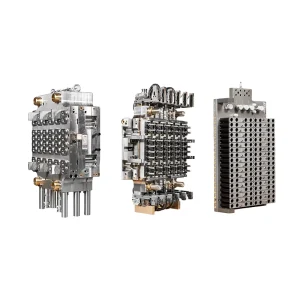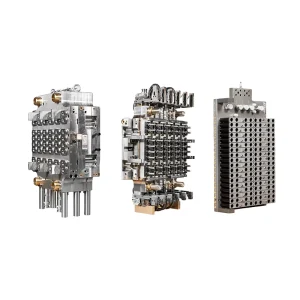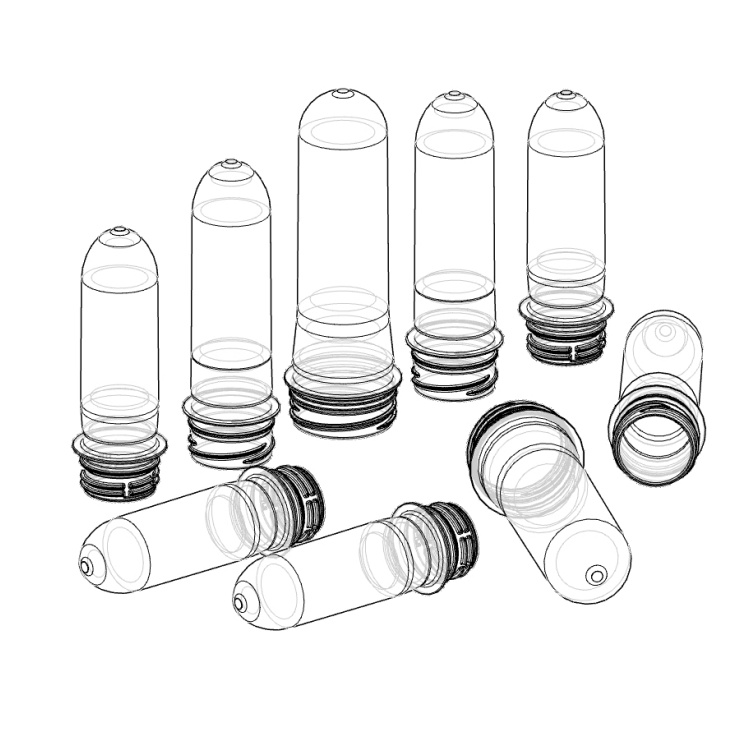How PET Injection Mold Improves Efficiency Versus Vacuum Casting Methods
When picking between PET injection molding and vacuum casting, you need to know what makes them different. Injection molding is awesome for making tons of identical parts fast and accurately. Vacuum casting, on the other hand, is great for testing designs or making small batches. Let’s dig into how these methods stack up in speed, cost, and what they’re best for.


What Makes PET Injection Molding a Preferred Choice for Mass Production?
Injection molding works by pushing melted PET into a mold. You control things like pressure and speed to avoid mistakes. Once the PET cools, the mold pops open, and you get your part. This method is super reliable for cranking out lots of the same item with exact measurements.
It’s perfect for stuff that needs to be clean, tough, and precise—like food containers, makeup bottles, or medicine jars. PET injection molding handles all kinds of products for food, drinks, and cosmetics, making it a go-to for big production runs.
Why Is Vacuum Casting More Suitable for Prototyping and Low Volumes?
Vacuum casting means pouring liquid resin into soft silicone molds in a vacuum. It’s slower than injection molding but lets you play around with different materials and shapes. Still, it’s not as steady or consistent as injection molding.
This method shines for prototypes or small runs where you don’t want to spend a lot on molds. But silicone molds wear out fast, so they can’t compete with the tough steel molds used in PET injection systems.
How Do Material Compatibility and Application Scenarios Compare?
PET injection molds are built for thermoplastics like PET, whether it’s new or recycled. They work with eco-friendly resins, too, which is great for companies trying to be green. This makes them a smart pick for sustainable packaging.
Vacuum casting uses polyurethane resins instead. These don’t handle high heat like PET, so they’re not good for food-safe or high-pressure items. That limits where you can use them.
How Do These Processes Perform in Terms of Efficiency?
Which Process Offers Faster Cycle Times and Higher Throughput?
Injection molding wins big here. It has a clever cooling system that keeps the mold at the right temperature. This speeds up cooling, so you can make parts in just seconds. That’s why it’s perfect for busy production lines that need to keep going.
Vacuum casting takes way longer. You need hours to prep molds, let the resin harden, and pop out the parts. It’s not built for fast-paced jobs.
What About Tooling Durability and Maintenance Requirements?
Injection molds are made from strong steel or aluminum. They can handle millions of uses. For example, the 96 Cavities PET Preform Mold for Husky Injection Machine uses S136 steel with HRC30-35 hardness. It lasts for 5–10 million cycles, so it’s super tough.
Vacuum casting molds are silicone, and they wear out after just 20–30 uses. Heat and chemicals break them down fast, so they’re not great for long-term work.
Can These Processes Be Automated Easily?
PET injection molding fits right into automated setups. Robots can grab parts, hot runner systems keep things flowing, and monitors check everything in real time. It’s made for modern factories.
Vacuum casting is mostly hands-on. You have to pour resin, check molds, and pull out parts yourself. That takes more time and can lead to mistakes.
How Consistent Are the Final Products From Each Process?
Does Injection Molding Provide Better Tolerance Control?
Yup, it sure does. Injection molding uses high-tech CNC machines to make molds super precise. This means every part has the same thickness and weight, even after thousands of runs. BJY’s mold designs avoid gaps that could mess up the shape or seal over time.
How Do Surface Finish Requirements Differ Between the Two Methods?
Injection-molded parts come out smooth and ready to use. The molds are polished and hardened, so parts slip out easily with no rough spots. This saves time since you don’t need extra work.
Vacuum cast parts often have rough edges or bubbles from air getting trapped. You might need to trim or polish them, which adds more steps.
What Are the Cost Dynamics Across Different Production Volumes?
Is Initial Tooling Investment Justified by Long-Term Efficiency?
Injection molds cost more upfront because they’re made from fancy steel and need precise machining. But they save money over time by making parts cheaply in big batches. They last for millions of cycles, so you don’t need new ones often.
Vacuum casting is cheaper to start because silicone molds are simple. But each part costs more since molds wear out fast, and you need workers to handle everything.
Which Process Is More Suitable Based on Production Volume?
Injection molding is the champ for big production runs. The 96 Cavities PET Preform Mold by BJY can churn out tons of parts at a low cost while keeping quality steady. It’s built for huge orders.
Vacuum casting is better for small jobs, like when you’re testing a new design or making a few custom pieces before going big.
Which Method Offers Better Waste Management?
Injection molding cuts down on waste with hot runner systems. These reuse extra PET inside the mold, so you lose less material. The 96 Cavities PET Preform Mold can switch between 16 to 144 cavities and uses a hot runner to save even more. This is awesome for eco-friendly manufacturing.
Vacuum casting wastes more because silicone molds are one-use, and extra resin spills out when you pour. That adds up fast.
How Does BJY’s Mold Technology Enhance Injection Molding Performance?
BJY makes top-notch preform molds for industries like drinks, makeup, medicine, and cleaning products. They handle everything from designing molds to building them with high-quality S136 steel. Their molds have smart cooling systems to keep things running smoothly.
With over 20 years of know-how, BJY’s 96 Cavities PET Preform Mold helps you ramp up production without losing quality. Whether you’re moving from prototypes to big runs or tweaking your setup for better results, BJY’s got your back with molds that fit your machines and goals.
What Environmental Factors Should You Consider When Choosing Between These Methods?
Which Process Consumes Less Energy Per Part Produced?
Injection molding is more energy-smart for big jobs. Its fast cooling channels mean quicker cycles, so you use less power per part. This makes it great for cranking out lots of items.
Vacuum casting takes more energy because curing each batch takes hours. That’s not efficient for large-scale work.
Are Both Methods Compatible With Cleanroom Standards?
PET injection molding works well in cleanrooms for things like medical or food packaging. It’s a closed system, so it stays clean. Vacuum casting involves pouring resin in open molds, which can let dust or germs in. That makes it tough to use in super clean settings unless you spend a lot to fix it.
How Sustainable Are These Methods Regarding Emissions And Recyclability?
Injection molding is great for green goals. It works with recycled PET and bio-based resins, which cuts down on waste. The 96 Cavities PET Preform Mold uses hot runners to reduce scraps, making it eco-friendly.
img.PET-Injection-Mold-96-cavities-for-Husky-Injection-Machine.webp
Vacuum casting isn’t as green. Every mold is new, and you lose resin with each pour, even for just one prototype. That’s less sustainable.
When Should You Choose One Over The Other Based on Your Application Needs?
Go for PET injection molding if you need thousands—or millions—of identical parts fast with perfect measurements. It’s built for jobs like soda bottles, medicine vials, makeup containers, or chemical jugs.
Pick vacuum casting only when you need flexibility, like for early designs or custom parts that aren’t ready for big production yet.
FAQ
Q1: Can I use vacuum casting materials in an injection mold?
A: No. Vacuum casting uses soft resins that can’t handle the heat and pressure of injection molds made for PET.
Q2: What’s the average lifespan of a high-quality preform injection mold?
A: A good steel mold, like BJY’s 96 Cavities PET Preform Mold, can last 5–10 million cycles with proper care.
Q3: Is there any way to automate vacuum casting?
A: You can automate some parts, like degassing, but it’s still mostly manual. It can’t match the full automation of injection molding.



